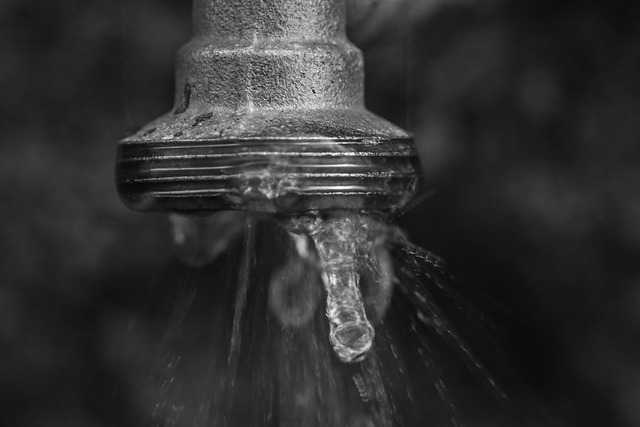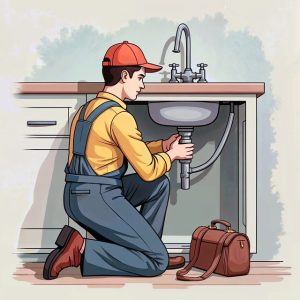Homeowners face common faucet problems like leaky taps due to worn O-rings or cartridges, and low water pressure from clogged aerators or mineral deposits. Preventive measures include regular cleaning with vinegar and monitoring tap functionality. Early action on minor issues is key to avoiding complex, costly repairs. Standard repair kits address leaks and low pressure; DIY methods like tightening connections or replacing O-rings can fix most problems. Persistent leaks or low pressure may require professional plumbers. Regular maintenance, including weekly checks and prompt addressing of issues, extends faucet life.
Are you tired of leaky faucets that waste water and drive you crazy? Learning basic faucet repair can save you money, reduce water usage, and boost your DIY skills. This comprehensive guide covers everything from identifying common issues like leaks and low pressure to replacing old parts and maintaining your fixtures for years to come. Armed with the right tools and knowledge, you’ll be well on your way to fixing those pesky faucets.
Understanding Common Faucet Issues

Many faucet issues can be easily attributed to common problems that plague homeowners. One of the most frequent concerns is a leaky faucet, often caused by worn-out O-rings or cartridge damage. These parts can degrade over time due to mineral buildup and corrosion, leading to drippy tapwaters. Another typical issue is low water pressure, which might result from clogged aerators or mineral deposits accumulating inside the faucet’s internal components.
Proper maintenance and timely repairs are key to avoiding these issues. Regular cleaning with vinegar or specialized cleaners can prevent mineral buildup. Keeping an eye on any unusual noises or changes in water flow will help you identify problems early on. Prompt action on minor issues can save you from more complex and costly repairs down the line, ensuring your faucet remains a reliable source of water for years to come.
Tools and Materials for Repairs

When tackling emergency faucet repairs, having the right tools and materials is essential for a successful and efficient fix. Standard faucet repair kits are readily available and include various components such as O-rings, cartridges, and washers—all crucial for addressing common issues like leaks or low water pressure. These kits often come with detailed instructions, making them user-friendly for both DIY enthusiasts and those who prefer a step-by-step guide.
Additional tools like adjustable wrenches, pliers, and tear-down tools can be beneficial for more complex repairs. It’s also advisable to have a supply of replacement parts specific to your faucet model, as not all faucets are created equal. With the right equipment at hand, you’ll be well-prepared to tackle common faucet repair challenges and restore your plumbing system to optimal working order.
Step-by-Step Guide to Basic Faucet Repairs

When it comes to basic faucet repairs, many homeowners can tackle simple issues with a few easy steps. Here’s a step-by-step guide to help you get started:
1. Turn off the water supply: Before beginning any repair work, shut off the water valves located under the sink. This prevents leaks and ensures safety during the process. You can do this by rotating the valves clockwise until they are tightly closed.
2. Disassemble the faucet: Gather the necessary tools, including a wrench or pliers, and remove the faucet handle(s) and any visible parts. Depending on the faucet’s design, you might need to unscrew or pop off the handles and spout. Take note of how these parts are assembled for easier reassembly later.
3. Inspect and replace worn-out parts: Check for common issues like broken O-rings, damaged washer cartridges, or corroded parts. These are often the culprits behind leaky faucets. Replace these components with new ones designed specifically for your faucet model. Make sure to have a spare set of these parts on hand for future repairs.
4. Reassemble and test: Once the new parts are in place, carefully reassemble the faucet, ensuring each component is secured properly. Turn on the water supply valves and check for leaks. If everything is sealed tightly, your faucet should now be fixed.
Handling Leaks: When to Call a Professional

Leaky faucets can be a common household issue, but knowing when to seek professional assistance is crucial for effective faucet repair. Many minor leaks can often be easily fixed by homeowners using basic tools and DIY techniques. This might include tightening loose connections, replacing worn-out O-rings or washer cartridges, or adjusting the faucet’s aerator. However, if the leak persists despite these simple remedies, or if you encounter more complex issues like low water pressure or continuous dripping, it’s time to call in a professional plumber.
Professional faucet repair services are equipped to handle a wider range of problems and offer long-lasting solutions. Plumbers have access to specialized tools and parts designed for various faucet models, ensuring accurate diagnoses and repairs. They can also identify potential hidden issues that might compound the problem, preventing future leaks or water damage. While DIY repairs can be cost-effective, calling a pro for persistent or complex faucet repair issues is often more efficient and ensures your home’s plumbing system remains in top condition.
Fixing Dull or Low Water Pressure

Low or dull water pressure from your faucets can often be fixed with a few simple steps as part of regular faucet repair. Start by checking for any leaks around the base of the faucet, which could be causing the water flow to diminish. If no leaks are found, the issue might lie in the aerator, a small screen that regulates the water pressure and flow. Removing and cleaning the aerator can often restore proper pressure. If this doesn’t solve the problem, it’s possible that sediment buildup within the pipes is restricting the water flow. In such cases, flushing the system or contacting a professional plumber for more in-depth faucet repair may be necessary.
Replacing Old or Damaged Faucet Parts

When it comes to faucet repair, one of the most common issues is replacing old or damaged parts. Over time, faucet components can wear out, especially in areas with hard water, leading to leaks and reduced functionality. The good news is that many repairs are straightforward and can be done by homeowners without extensive plumbing knowledge.
The first step in replacing damaged faucet parts is identifying the specific issue. Common culprits include worn-out O-rings, corroded valve seats, or broken spout washers. Once the problem area is determined, it’s time to gather the necessary replacement parts. Many hardware stores and online retailers offer a wide range of faucet repair kits that include all the components needed for common fixes. These kits are often an economical solution, providing both quality parts and convenience.
Maintenance Tips to Prevent Future Problems

Regular maintenance is key to preventing future faucet repair issues. Start by checking your faucets weekly for any leaks or signs of wear, addressing them promptly to avoid more severe damage. Replace worn-out washer rings and O-rings as needed, as these parts are common culprits in faucet leaks.
Additionally, keep an eye on the faucet’s valve seats and cartridges, which can become contaminated with mineral deposits over time. Regular cleaning or replacement of these components can extend the life of your faucet and prevent clogs or reduced water flow. Remember, a little preventive care can go a long way in saving you time, money, and potential headaches down the line when it comes to faucet repair.
